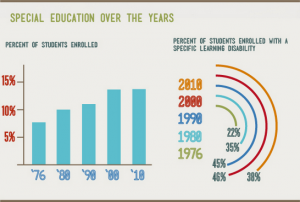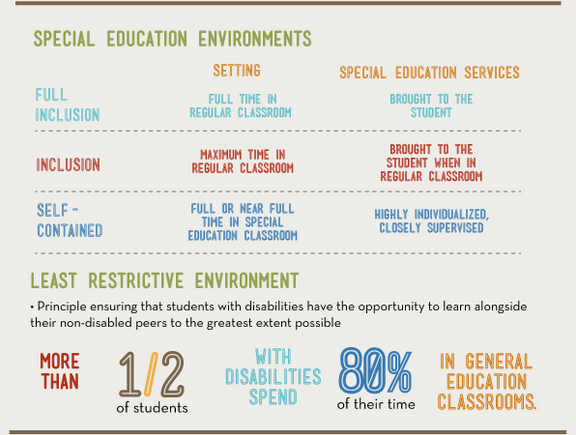Demand for Special Education Teachers
The demand for additional math and science teachers in U.S. schools has been well publicized. Less well known but equally pressing is the need for special education teachers. According to the National Education Association, the number of students enrolled in special education programs has risen by 30 percent in the past decade. As better screening identifies more disabilities in children, the demand for special education teachers is expected to increase steadily.

One of the special education areas that has experienced significant growth in recent years is support for students diagnosed with Autism Spectrum Disorder (ASD). A 2013 CDC study found that 1 in 50 children between the ages of 6 and 17 have been diagnosed with ASD, a 72 percent increase since a similar study was completed in 2007. In addition to an increasing demand for special education teachers due to the surge in diagnoses of autism and other disabilities, there are job opportunities arising from the need to replace teachers who leave the profession each year.
Work Environment

Special education teachers use a variety of specialized teaching methods to help students with physical, emotional or mental disabilities. Depending on the needs of their students, special education teachers may adapt general education lessons in reading, writing, math and social studies for students with mild to moderate disabilities. For students with more severe disabilities, basic life skills including communication and literacy may be included in the curriculum.
Special education teachers may work in either an inclusive environment, co-teaching with a general education teacher in a general education classroom, or in a self-contained classroom with the support of a teaching assistant. A third special education model is the resource environment, which allows a special education teacher to pull students from the general classroom for specialized instruction in a quieter location.
Education and Training
Becoming a special education teacher in a public school requires a minimum of a bachelor’s degree and a state-issued license or certification. A growing number of universities are showing their commitment to special education by requiring special education teachers to complete graduate-level preparation. Coursework offered in these programs typically includes:
- Educational psychology
- Strategies for teaching students with disabilities
- Legal issues of special education
- Case management
- Assessment, curriculum development and planning
In addition to completing coursework, graduate students in special education programs typically spend a significant amount of time completing a classroom internship under the supervision of a licensed teacher and the mentorship of a university supervisor.
USC Rossier’s Master of Arts in Teaching (MAT) program is an example of a graduate-level program that offers students the option to add special education training to their general or single-subject education background by earning a special education (SPED) credential. Students who choose to earn a SPED credential, in addition to completing the MAT program, will have the opportunity to work in a variety of special education environments, from self-contained classrooms to mainstream classrooms that include special education students. Graduates of this program find that they have an additional edge in the job market. See blog post: MAT Grads Discover High Demand for New Special Ed Credential.
The Bureau of Labor Statistics (BLS) reports that more than 26,000 additional special education teachers will be needed through 2022. Due to the shortage of qualified special education teachers, some states have been forced to issue emergency licenses to allow less-qualified teachers to work in a special education setting. Most schools prefer to hire teachers who are highly qualified to teach special education students, so teachers who complete a special education credential will find a wide range of job options.


